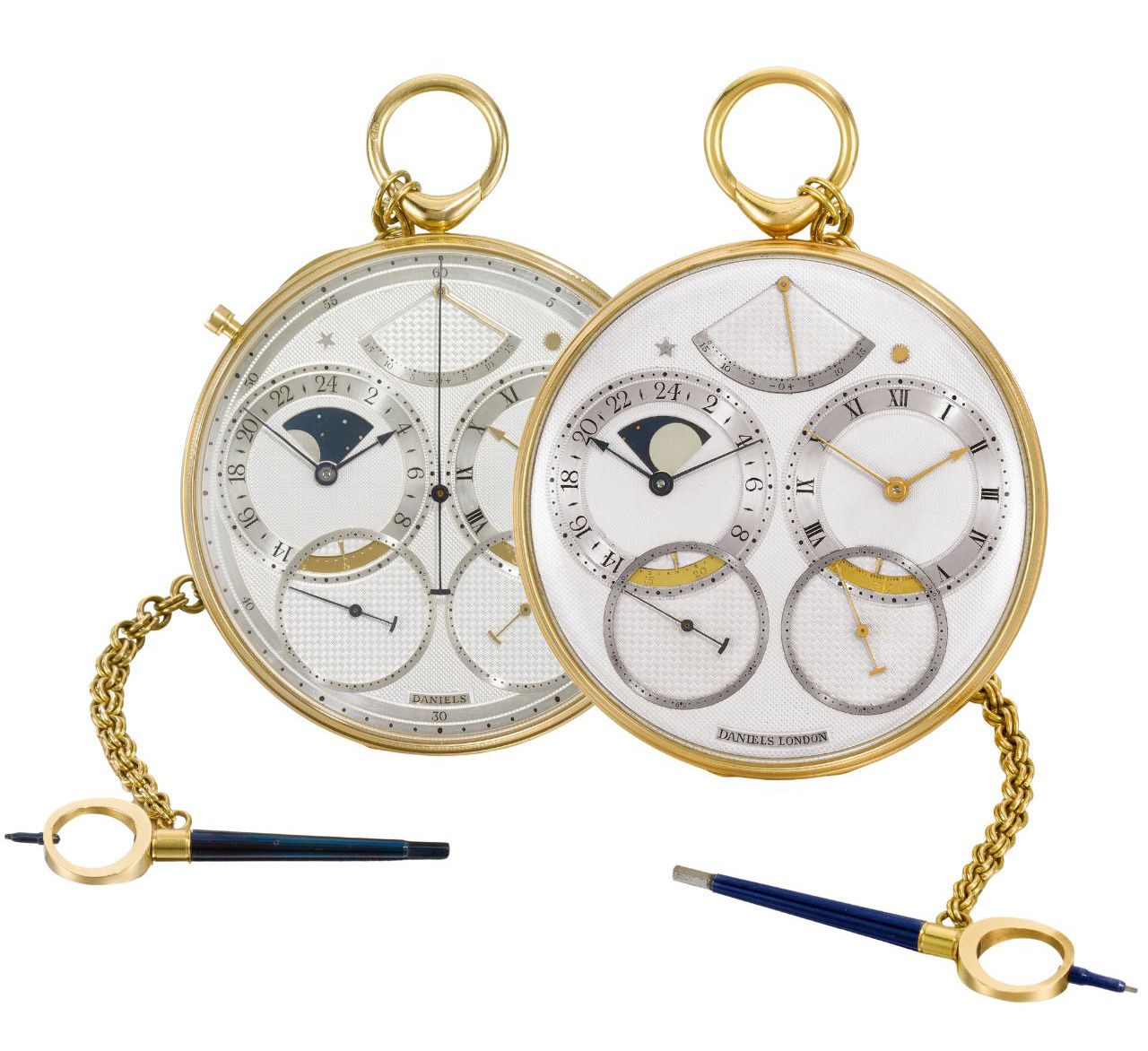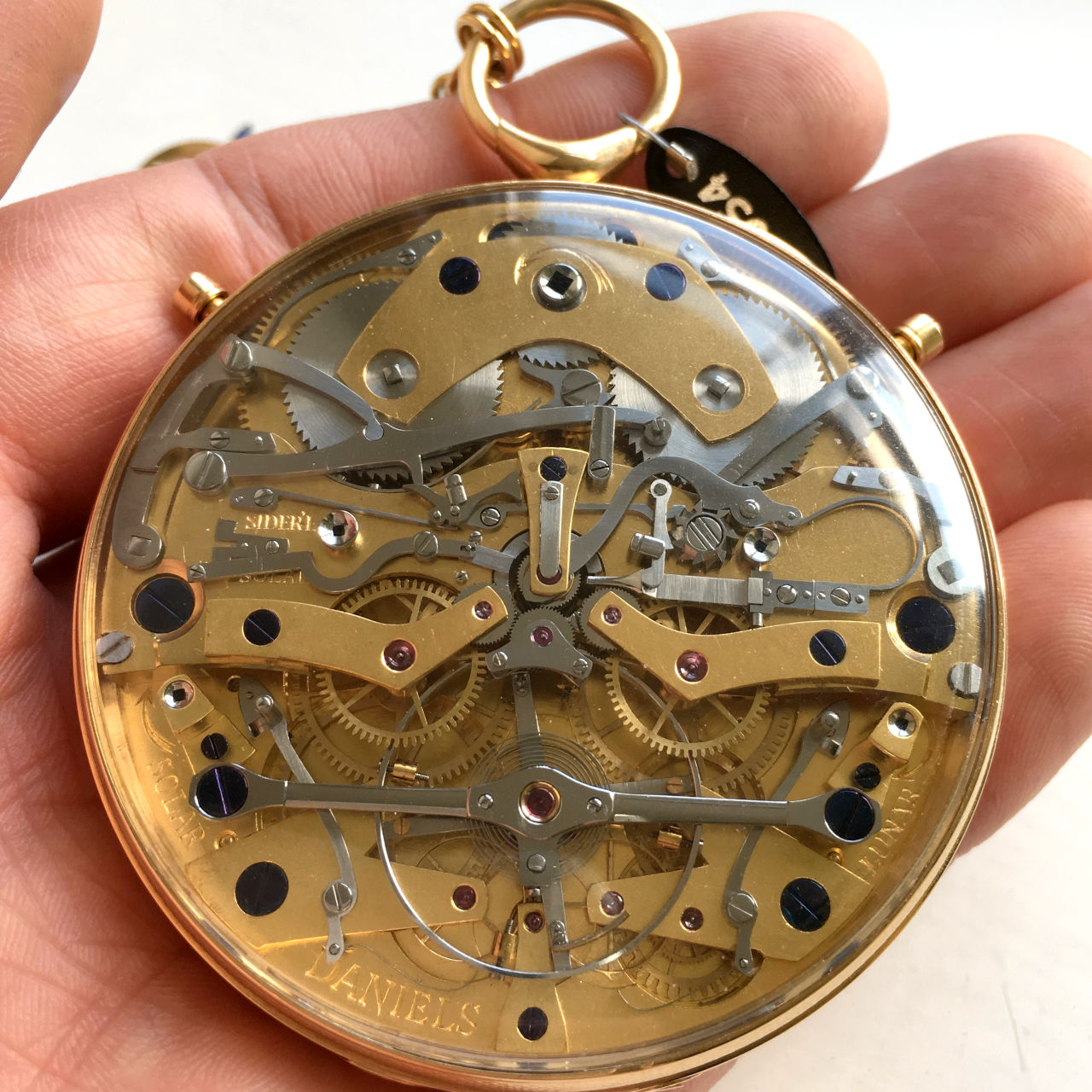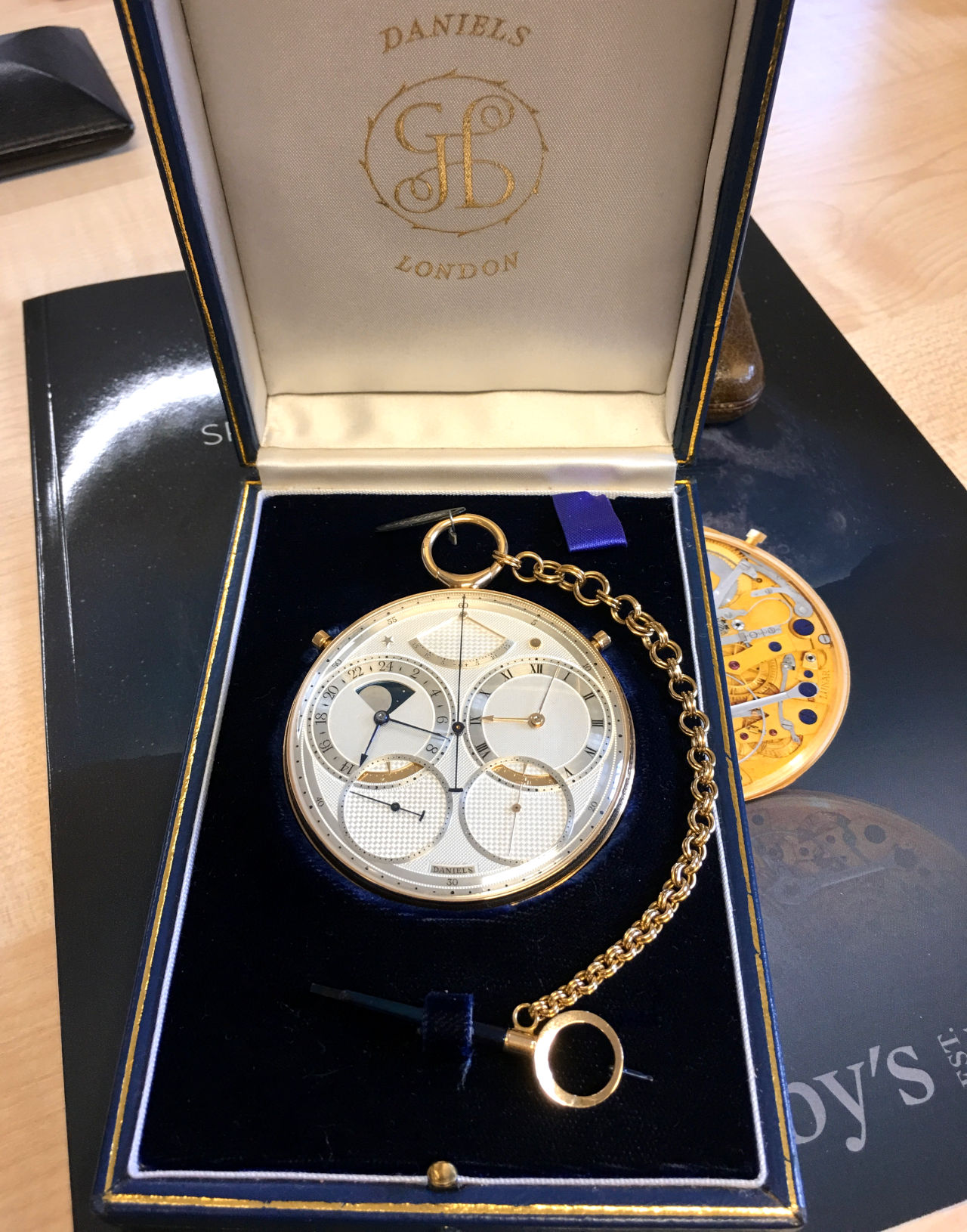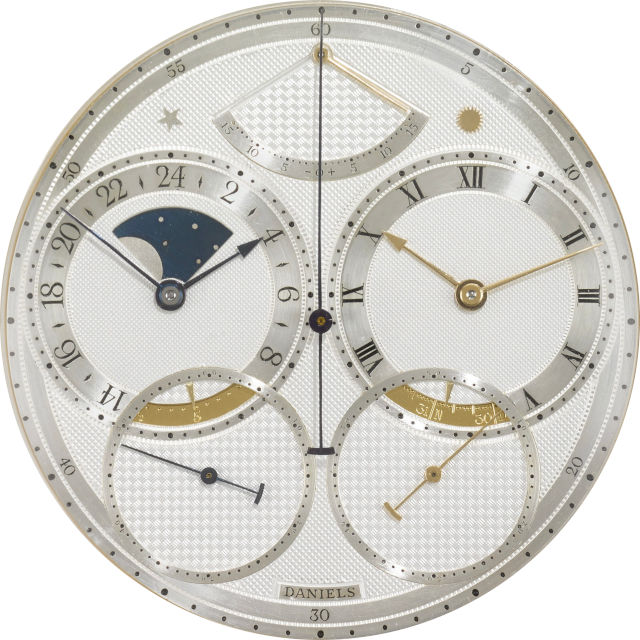Being asked to research and write the catalogues for both of George Daniels’s Space Traveller watches gave me a fascinating opportunity to examine these two iconic watches up close.

George Daniels Space Traveller Watches – image © Sotheby’s
George Daniels was fascinated by space exploration and in homage to the astronauts he so admired, in 1979 he decided to make a watch that could be of use in space. Daniels began work on his first Space Traveller watch in 1979 and design drawings from 1980 show that planning was already at an advanced stage. Daniels made just two Space Traveller watches and each display sidereal and mean solar time, phases and age of the moon, annual calendar and the equation of time.
Their left hand dials show sidereal time in a 24-hour format; within this dial a wedge-shaped aperture reveals the moon phases while a slimmer aperture within the chapter ring contains a gold disc with a pointer above that indicates the age of the moon. The right hand dial shows mean solar time, the inset aperture with gold disc displays the annual calendar. Traditionally the standard of time used by astronomers, sidereal time is based on the amount of time it takes the Earth to turn on its axis. By measuring the Earth’s transit of a fixed star, one is able to measure the actual time it takes for the Earth to turn on its axis. This period is known as a sidereal day, which is approximately 23 hours, 56 minutes and 4.1 seconds. The equation of time is the difference between apparent solar time (the time as indicated on a sundial) and mean time (the average of solar time). Since the Earth has an elliptical orbit, the difference between mean and solar time ranges from + 14 minutes, 59 seconds to – 16 minutes, 15 seconds. Solar time agrees with mean time on or about 15 April, 14 June, 1 September and 24 December. At the top of the dial, the fan-form sector displays the equation of time. Smaller seconds dials for both the sidereal and mean solar time dials can be seen at the base of the sidereal and mean solar dials, overlapping their corresponding chapter rings.
George Daniels Space Traveller I – video © Alexander Barter
George Daniels agreed to sell his first Space Traveller watch in 1982. Immediately regretting his decision, he set about making a second example. Daniels was determined to make his new version even more complex by the addition of a chronograph that could be switched between the solar and sidereal time trains.
George Daniels Space Traveller II with chronograph – video © Alexander Barter
The movements of both Space Traveller watches were designed with a 32-hour duration and each has two going-barrels with two contra-rotating trains driving the two escape wheels of Daniels’s independent double wheel escapement, incorporating a ‘Y’-shaped central locking detent with three pallets and mono-metallic, stainless steel, four-arm balance with gold adjusting screws, free-sprung overcoil balance spring and Daniels’s auxiliary compensation. Space Traveller II has slimmer central bridge work to help accommodate the chronograph mechanism; in fact much of the chronograph work is visible above the movement’s backplate. Remarkably the chronograph can be switched between the sidereal and mean solar trains to compensate for the 3.555 minutes of daily difference between mean solar and sidereal time.

George Daniels Space Traveller II movement – image © Alexander Barter
The Space Traveller II was kept by George Daniels until his death in 2011 and was his dress watch of choice. Of course everyone was always keen to see what watch Daniels was wearing – the design of this watch with its glazed case back meant that, not only could the viewer marvel at the beauty of its dial, but they could be equally mesmerised by the complexity and wonder of the movement, clearly displayed through the exhibition case back.
In 1988, the Space Traveller I appeared at a Sotheby’s auction in Geneva where it sold for CHF 220,000 (£83,000 / $151,000). Entering a private collection, it wasn’t seen again in public until it was sold once again at Sotheby’s in London on 2 July 2019 by which time its value had increased…just a little….the Space Traveller I sold for £3,615,000 ($4,554,900). Meanwhile, the Space Traveller II had been auctioned at Sotheby’s in London on 19 September 2017 when it achieved £3,196,250 ($4,322,288). Interestingly, the Space Traveller II had in fact been sold just 5 years previously on 6 November 2012, also at Sotheby’s, for £1,329,250 ($2,124,407), reflecting the extraordinary increase in the value of Daniels’s watches seen in recent years. [All exchange rates from the Bank of England’s historical daily spot rates]

George Daniels Space Traveller II in original box – image © Alexander Barter
Sotheby’s asked me to research and write the catalogues for both Space Traveller watches for their auctions in 2017 and 2019. It was extraordinary to handle these watches and, sitting with them in front of me, I couldn’t help but be reminded of the famous quote by Sir David Salomons. Writing about Daniels’s hero Abraham-Louis Breguet, Salomons noted: “to carry a fine Breguet watch is to feel that you have the brains of a genius in your pocket” – in that sentence you could quite easily substitute Daniels’s name for Breguet’s.
